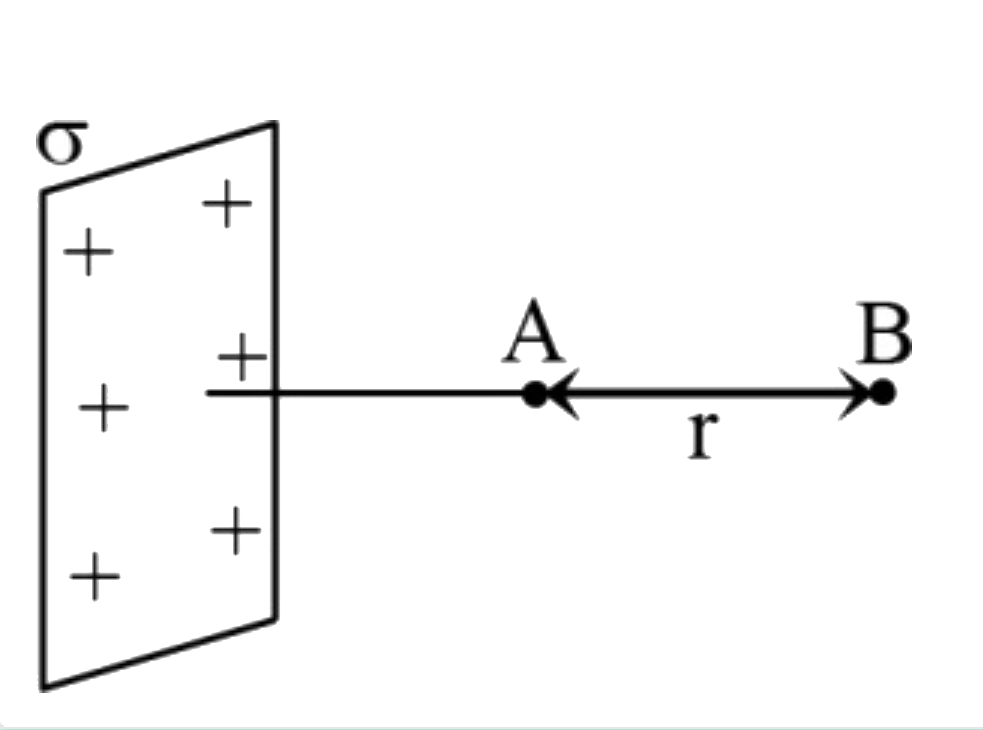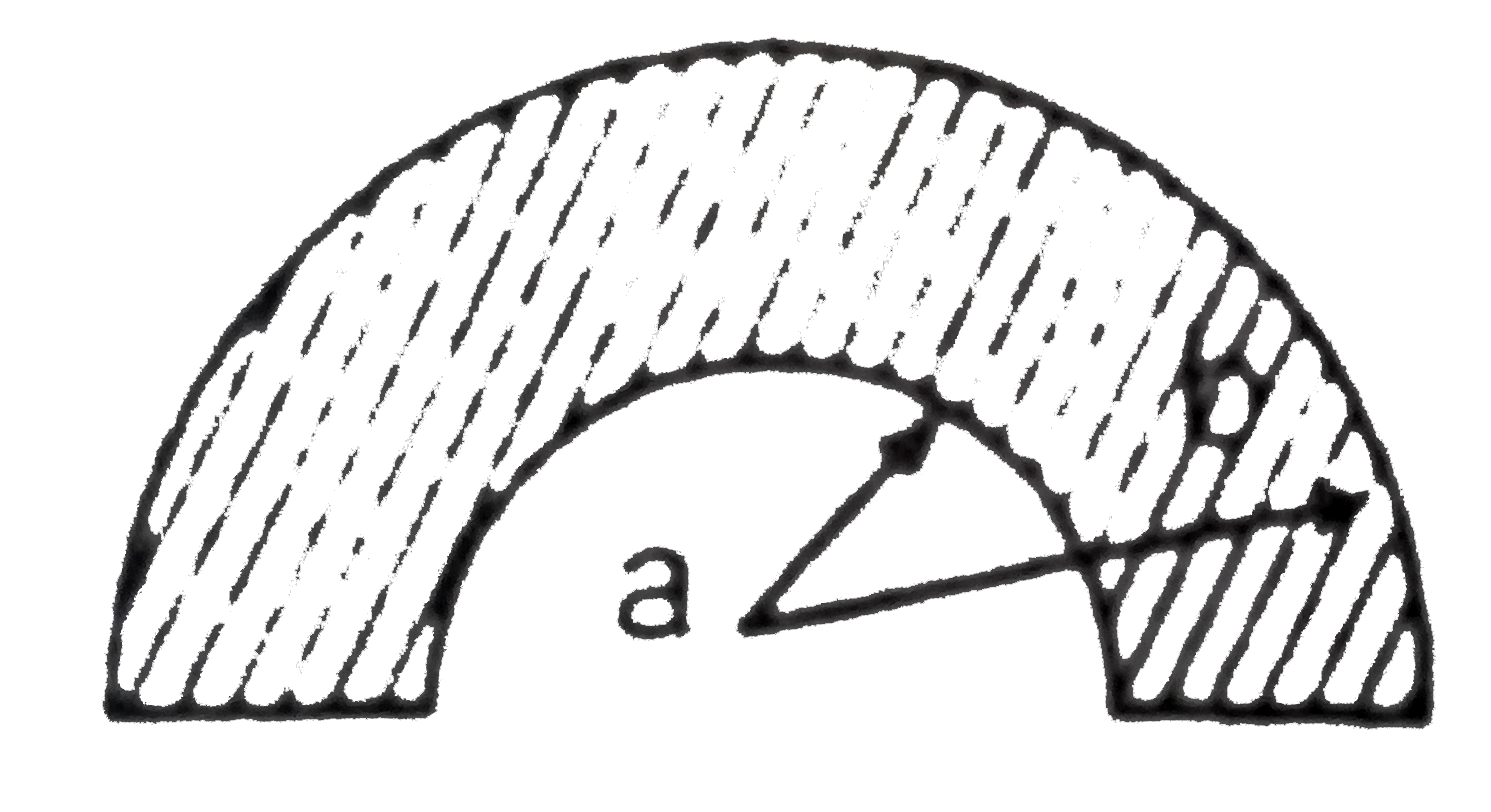An infinite sheet of charge has surface charge density σ . The separation between two equipotential surfaces, whose potential differ by V is:
σV2∈0
2∈0Vσ
∈0Vσ
2σ∈0V
The correct Answer is:B
V=σ2e0.d⇒d=2Ve0σ
Similar Questions
An infinite nonconducting sheet has a surface charge density of σ=0.10μC/m2 on one side. How far apart are equipotential surfaces whose potentials differ by 50 V?
View SolutionAn infinite conducting sheet has surface charge density σ. The distance between two points is r. The potential difference (VA−VB) between these point is

View Solution
Knowledge Check
An infinite sheet of charge has a surfaces charge density of 10−7Cm2. The separation between two equipotential surfce whose potentials differ by 5V is
A0.64cmB0.88mmC0.32cmD5×10−7mNature of equipotential surface for a point charge is
Aellopsoid with charge at fociBsphere with charge at the centre of the sphereCsphere with charge on the surface of the sphereDplane with charge on the surfaceElectric field intensity at a point due to an infinite sheet of charge having surface charge density σ is E.If sheet were conducting electric intensity would be
AE/2BEC2ED4E
An infinite nonconducting sheet with a uniform surface charge density sets up parallel equipotential surfaces. Any pair of surfaces differing by 25.0 V are separated by 8.80 mm. (a) What is the magnitude of the surface charge density? (b) If an electron is released near the sheet, does it tend to move from higher to lower potential or vice versa ?
View SolutionAn infinite plane sheet of charge density 10−8Cm−2 is held in air. In this situation how far apart are two equipotenitial surfaces, whose p.d is 5 V ?
View SolutionAn infinite cylinder of radius ro, carrying linear charge density λ. The equation of the equipotential surface for the cylinder is
View SolutionAn infinite plane sheet of positive charge has surface charge density σ. A metallic ball of mass m and charge +Q is attached to a thred and is tied to a point A on the sheet PQ. The angle θ made by the string with plane sheet is in equilibrium is
View SolutionA non-conducting semi circular disc (as shown in figure) has a uniform surface charge density σ. The ratio of electric field to electric potential at the centre of the disc will be

View Solution
